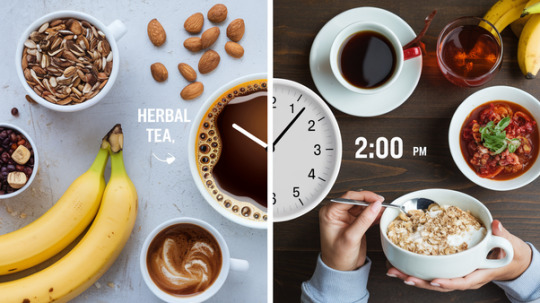#MindfulnessForRest
Explore tagged Tumblr posts
Text
Improve Your Sleep Tonight: Proven Tips for a Restful Night

Introduction Sleep is the cornerstone of health, yet millions struggle to achieve quality rest. In our fast-paced world, factors like stress, technology, and poor habits disrupt our natural sleep cycles. This article unveils science-backed strategies to transform your sleep, from dietary adjustments to environment optimization. Whether you’re battling insomnia or seeking deeper rest, these actionable tips will guide you toward waking up refreshed and energized.
1. Diet and Habits: Fueling Sleep Through Nutrition
What you eat—and when—profoundly impacts sleep quality.
Avoid Late-Night Meals Eating close to bedtime strains digestion, delaying sleep onset. Heavy, fatty, or protein-rich meals trigger orexin, a hormone that promotes alertness. Instead, opt for light, complex carbs like oatmeal or whole-grain toast, which boost serotonin, a precursor to melatonin.
Coffee: Timing Matters Caffeine’s half-life is 5–6 hours, meaning afternoon coffee can linger in your system. Studies show consuming caffeine even 6 hours before bed reduces sleep by 1 hour. Swap evening coffee for herbal teas like chamomile or valerian root, known for their calming effects.
Alcohol’s Deceptive Lull While alcohol may induce drowsiness, it fragments REM sleep, vital for memory and mood regulation. A 2018 study in Sleep Medicine found that alcohol consumption decreases REM sleep by 15-20%. Limit intake to 1–2 drinks, ideally 3 hours before bed.
Spicy Foods and Sleep Capsaicin in spicy foods elevates body temperature, counteracting the natural cooling process needed for sleep. An International Journal of Psychophysiology study linked spicy dinners to prolonged sleep latency. Opt for sleep-friendly snacks like bananas (rich in magnesium) or almonds.
2. Light Exposure and Environment: Crafting a Sleep Sanctuary
Lighting and bedroom setup are pivotal for circadian rhythm alignment.
Combat Blue Light Smartphones and laptops emit blue light, suppressing melatonin by up to 50% (Harvard Health). Use blue-light-blocking glasses or apps like Flux after sunset. Keep devices out of the bedroom to eliminate temptation.
Harness Natural Light Morning sunlight exposure boosts daytime alertness and melatonin production at night. Aim for 30 minutes of daylight before noon. In darker months, consider a 10,000-lux light therapy lamp.
Optimize Bedroom Conditions
Temperature: The ideal range is 60–67°F (15–19°C). A cool room mimics your body'snocturnal drop in temperature.
Darkness: Blackout curtains or a sleep mask block disruptive light. Even dim light (100 lux) can suppress melatonin by 50%.
Noise Control: White noise machines mask disturbances. A Sleep Foundation study found white noise improves sleep efficiency by 38% in noisy environments.
3. Physical Activity and Sleep Rhythm: Move to Rest Better
Exercise is a potent sleep enhancer, but timing and type matter.
Aerobic Exercise and Deep Sleep Moderate aerobic activities like walking or cycling increase slow-wave (deep) sleep, which repairs tissues and strengthens immunity. Aim for 150 minutes weekly, as recommended by the CDC.
Avoid Late-Night Workouts High-intensity exercise within 2 hours of bedtime raises cortisol and body temperature, delaying sleep. Opt for yoga or stretching instead—poses like legs-up-the-wall promote relaxation.
Sync with Your Chronotype Your genetic chronotype (early bird vs. night owl) dictates your ideal sleep window. Use tools like the Munich Chronotype Questionnaire to identify yours, then adjust schedules gradually.
Napping Wisely Keep naps under 30 minutes and before 3 PM. Longer naps risk sleep inertia, while late naps disrupt nighttime sleep.
4. Sleep Environment Upgrades: Beyond the Basics
Invest in Your Mattress Your mattress should support spinal alignment. Side sleepers benefit from memory foam, while stomach sleepers need firmer surfaces. Test mattresses for 15 minutes in-store to gauge comfort.
Pets and Sleep While 56% of pet owners share beds with pets, their movements can cause 20+ nightly disruptions. Designate a pet bed nearby for uninterrupted rest.
5. Supplemental Techniques: Unconventional Hacks
Shiatsu for Relaxation Self-shiatsu on pressure points like HT7 (inner wrist) reduces stress. A 2020 Journal of Sleep Research study noted a 40% improvement in sleep onset for participants practicing hand shiatsu.
Gratitude Journaling Writing three positive daily events lowers pre-sleep anxiety. This practice shifts focus from stressors to positivity, easing the mind into rest.
WHAT IF OUR “DREAM PHYSIQUE” BECAME A REALITY? | Supplements—health
Conclusion Improving sleep requires consistency and experimentation. Prioritize a cool, dark bedroom, mindful eating, and aligned exercise routines. Remember, small changes—like a 15-minute walk or swapping evening coffee—can yield profound results. For persistent issues, consult a sleep specialist to explore underlying causes. Here’s to restful nights and vibrant mornings!
#SleepBetterTonight#HealthySleepHabits#SleepScience#RestfulSleep#DeepSleepTips#SleepSanctuary#OptimalSleepEnvironment#NoBlueLight#BedroomGoals#WhiteNoiseMagic#FoodsForSleep#CaffeineCutoff#SleepFriendlySnacks#AlcoholAndSleep#NighttimeNutrition#ShiatsuForSleep#GratitudeJournaling#PreBedYoga#StressFreeSleep#MindfulnessForRest
0 notes